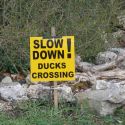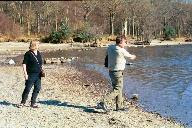Our one day in Crete. Could have set it up slightly differently maybe, but would really rather be back in Cyprus at this point. But a lovely day. Leisurely breakfast and then a walk down the hill to the harbour. We’re headed for the Historical Museum but arrive just as a coach is unloading about sixty old people on the steps. (Well, all right maybe they aren’t any older than we are but they look old and the museum is about to be really crowded).
So we wander along the waterfront. They’re continuing to excavate the old Venetian harbour with digs that go below the water line and between the fort and the modern fishing boats it’s a fascinating and attractive site. Up the pedestrian walkway and we pause for koulouri, the thin sesame studded bagels. There’s a handy bakery, although in Greece we’re used to buying them from a cart on the street. Pick up the tickets for tomorrow’s bus to the airport from the dispensing machine at Eleftherias Square and back to the Historical Museum, which is almost empty now. We spend the afternoon there.
Crete has a history that is not only interesting but very long. Knossos Palace is a stunning relic of the Minoan period but the palace at Knossos dates to a period from about 1900 to 1700 bc. Not all that far back in Crete’s astonishing timeline. Remains of a settlement underneath the Bronze Age palace go back to the seventh millennium bc. There are actually stone tools from southern Crete that are at least 130,000 years old. There is speculation that pre-Homo sapiens hominids from Africa crossed to Crete on rafts, making Crete a cradle not only of civilisation but of humanity.
Obviously no museum could do justice to a history that goes from quartz axes to anti-Nazi resistance but the museum makes a creditable attempt, starting with a time outline and early artefacts - tools, lamps, vases - and proceeding to various theme areas, such as icons and Crete in WW II. Some of the icons are pretty hard to make out, as they’re protected from light almost to the point of making them invisible, but I’m taken with some embroidery (circa 1700) which uses traditional Byzantine stylisation but includes some surprisingly modern faces, apparently silk with minutely embroidered features - right down to eyelashes. And there’s also a room devoted to a modern painter, Jannis Spyropoulos. May I photograph? Of course, without flash. Everyone in the museum relaxed, friendly, helpful. Including the woman in the tiny cafeteria who makes us Greek coffees which we take outside to a little patio. Super afternoon.








